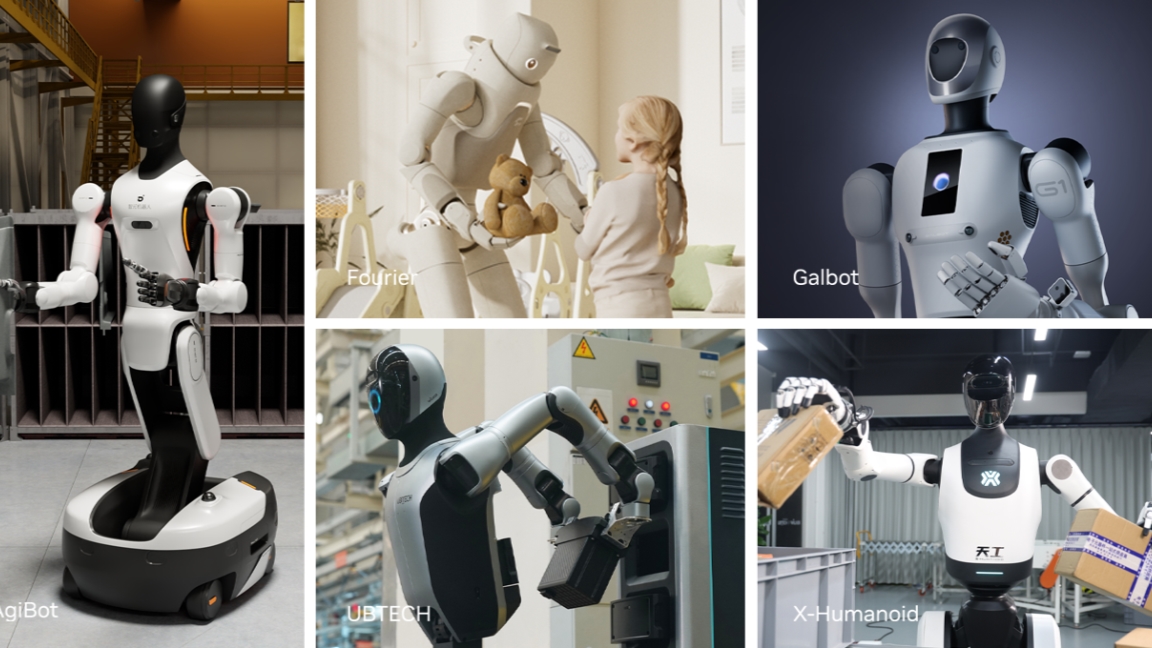
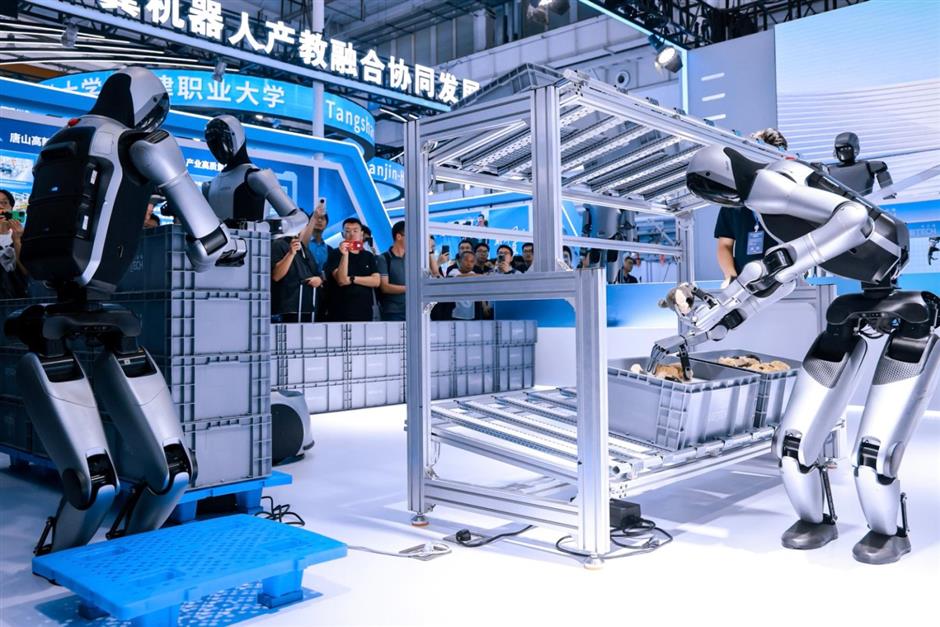
Two UBTech robots are shown doing factory work at WRC. Robots are moving from flashy demonstrations to real-world commercial applications.
The 2025 World Robot Conference in Beijing shows a fundamental industry shift: Robots are transitioning from showy demonstrations to commercial applications. A record 200 robotics businesses attended this year's event, underscoring a focus on tangible deployment.
Unitree, AgiBot and UBTech, along with Nvidia, are leading the industry's next growth phase with deep AI-robotics integration.
Embodied intelligent robots need real-world pilot deployments to validate technologies and optimize engineering, according to International Data Corp. IDC analyst Li Junlan said that different apps are "paving the way for mass adoption."
Key players drive commercial adoption
Unitree founder Wang Xingxing is convinced that humanoid robot shipments will double annually. He is predicting hundreds of thousands to a million units within two to three years, thanks to technological advances.
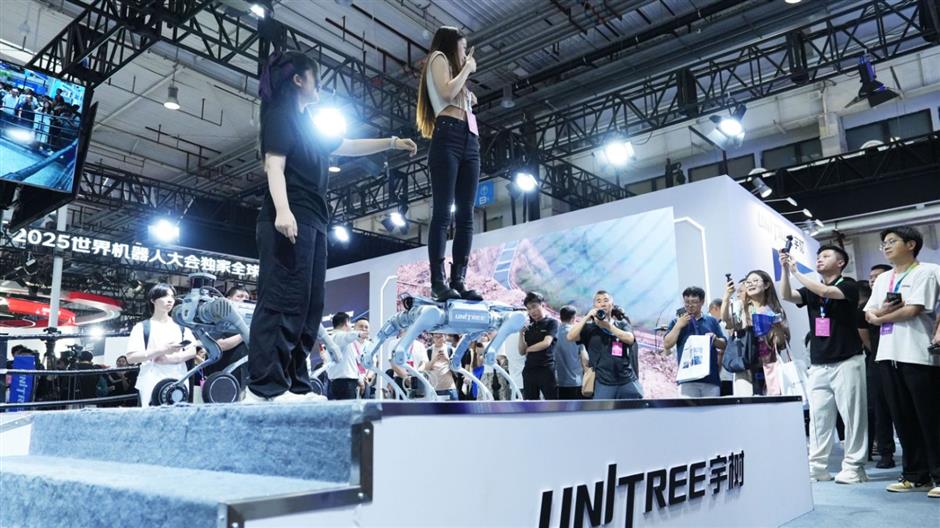
A lady stands on a Unitree dog at WRC. Unitree founder Wang Xingxing is expecting high growth in sales for robots.
Wang stressed the importance of robots performing beneficial activities. He believes the biggest bottleneck is the constraints of large-scale robot models, which are trailing behind general AI in the "initial stage of ChatGPT." In the next two to five years, he expects to improve huge models, low-cost hardware, and computational power.
Shanghai-based AgiBot has signed a "several dozen million yuan" deal with Fulin Precision Co to deploy roughly 100 Expedition A2-W humanoid robots in Fulin's plants. This is China's first large-scale commercial contract for embodied intelligent robots in the industrial sector, marking a significant worldwide milestone. The agreement marks the industry's official shift from the validation stage to the next era of commercial implementation.
AgiBot and Unitree received 124 million yuan (US$17 million) in orders from China Mobile in July, the largest humanoid robot transaction in the country.
Five humanoid robots from Hong Kong-listed UBTech were on display, including the Walker S2, the first with autonomous battery switching. The company's robots are in factories worldwide, proving their industrial readiness.
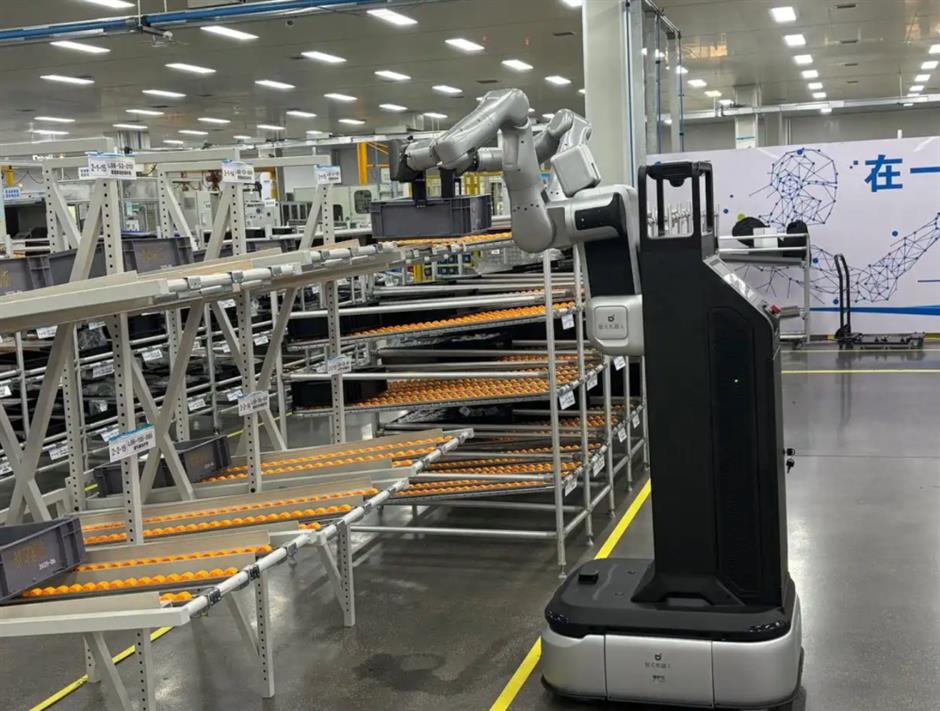
An AgiBot robot at a factory in Fulin Precision. The Shanghai-based company announced a new deal at WRC.
The AI-robotics nexus: a catalyst for growth
Nvidia's presence at the conference highlights AI's pivotal role in accelerating commercialization.
Rev Lebaredian, vice president of Omniverse and Simulation Technology, explained that Nvidia's solutions support cloud-scale model training, physics-based simulations for synthetic data generation, and real-time AI deployment. Several top Chinese robotics firms, including Unitree, AgiBot and Fourier, are leveraging these platforms.
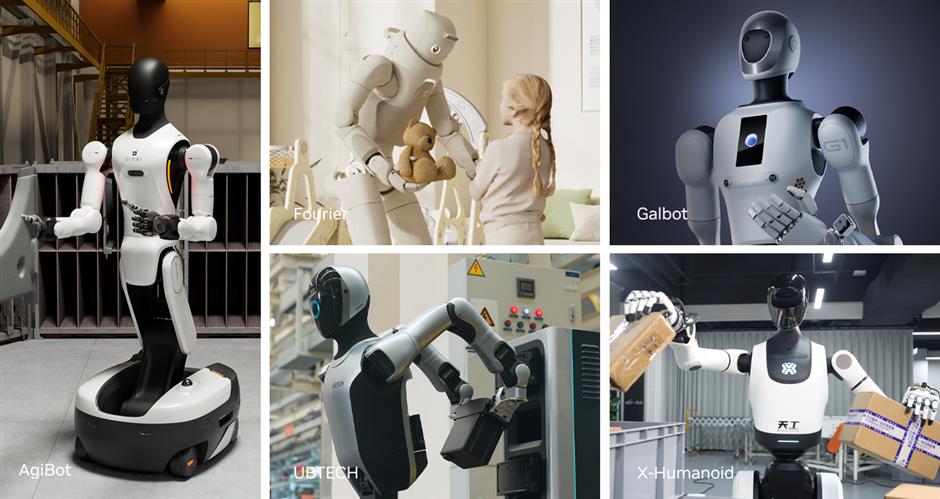
Chinese robots are developed with Nvidia's platforms and services.
On its AI platform, PAI, Alibaba Cloud offers Nvidia's full-stack robotics and physical AI components, giving developers a complete solution for constructing embodied AI agents.
The GR-3 humanoid robot from Shanghai-based Fourier Robotics was trained using Nvidia's Isaac Lab platform. The GR-3 works well with humans in dynamic, unstructured contexts.
With improved training data, architecture and collective intelligence, IDC says embodied intelligence models are accelerating convergence. These will be powered by high-fidelity physical data and real-world datasets, rapidly improving robot generalization. Advanced robot "swarm intelligence," where collaborative algorithms improve difficult task processing and knowledge sharing, will also emerge.
The WRC 2025, which ends on Tuesday, emphasizes that the future of robots is more than just cool demos; it's about delivering real-world productivity and economic value.

